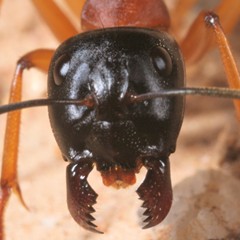 Over the weekend, I finally got around to seeing Mel Gibson’s hyper-violent Apocalypto; it’s been on my list for a while now, primarily because I need to study up on jungle chase scenes for the Now the Hell Will Start screenplay. The flick is every bit as brutal as I’d heard, and then some—don’t think I’ll be able to shake the human-sacrifice scene for weeks or months. But it’s also a crazy masterpiece of sorts; much respect to Gibson for pursuing such an odd and striking vision. Rare is the filmmaker who has the stones (and the zillions of dollars) necessary to shoot a two-hour epic entirely in the Yucatec Maya language.
Over the weekend, I finally got around to seeing Mel Gibson’s hyper-violent Apocalypto; it’s been on my list for a while now, primarily because I need to study up on jungle chase scenes for the Now the Hell Will Start screenplay. The flick is every bit as brutal as I’d heard, and then some—don’t think I’ll be able to shake the human-sacrifice scene for weeks or months. But it’s also a crazy masterpiece of sorts; much respect to Gibson for pursuing such an odd and striking vision. Rare is the filmmaker who has the stones (and the zillions of dollars) necessary to shoot a two-hour epic entirely in the Yucatec Maya language.
Reading up on Apocalypto after my viewing, I came across several charges of historical inaccuracy. This got me thinking about a possible scientific inaccuracy—there’s a scene where the female protagonist uses live ants to suture her son’s wound, and the technique struck me as potentially apocryphal.
According to the late, great biologist Eugene Willis Gudger, ant mandibles were, indeed, used as natural sutures in ancient times. The first mention in medical literature can be found in Hindu texts dating back to roughly 1,000 B.C. Gudger found that the practice spread to Asia Minor and Europe, and persisted through the waning days of the Ottoman Empire:
One account from 1896 in Smyrna, Asia Minor, described the application of ten living ants to a one-inch wound of the scalp by a Greek barber who handled the ants, approximately three-eighths of an inch long, with tweezers. Once their jaws were firmly affixed to the wound he snipped off the bodies with scissors. The retained mandibles were removed after three days, when favorable healing was established.
But Mayan usage of the technique is not mentioned in the peer-reviewed literature; Brazil is the only Western Hemisphere nation where the ant-mandible stitching was definitely practiced. So let’s give Apocalypto half credit on this one.
Tons more on the medicinal use of insects here, including a compendium of bugs and their specific uses. Whooping cough? A nice cockroach will fix you right up, promise.


kyle // Mar 17, 2009 at 4:00 pm
ran across your book randomly a few weeks ago… now i’m subscribing to your blog on google reader, based purely on the fact that your book sounds awesome and you’re friends with ta-nehisi. looks like you’ll provide some variety from the political blog echo chamber (as fun as it is in there some days!)
Brendan I. Koerner // Mar 17, 2009 at 4:04 pm
Many thanks, Kyle. That’s what I’m here for–Ta-Nehisi, et. al. have the political stuff locked down, so thought I’d fill in the esoterica niche. Hope you enjoy, and hope you dig the book. Paperback’s out on 5/26, in case you want something more portable.
Jordan // Mar 18, 2009 at 12:21 am
It’s good to know that film has some redeeming value. I’ll have to check it out from the library when a copy comes due (all 33 in the Multnomah County library system are apparently checked out right now).
The Maya are seriously fascinating and it’s not often that they come up in cinema.
Brendan I. Koerner // Mar 18, 2009 at 9:46 am
@Jordan: Yeah, definitely worth your time. Becomes a straight action flick over the last half hour or so (albeit an extremely well-done action flick). The meat of the tale is in the journey from forest to Mayan pyramid. Just awesome. Though not light viewing by any means.
A Taxidermist’s Best Friend // Feb 26, 2010 at 10:15 am
[…] a year ago, we marveled at the way in which ancient physicians used ant jaws as sutures. Blame our childhood Flintstones […]
Kieron // Sep 11, 2011 at 10:10 am
The blog mentions some Hindu texts contained references of sutures with ant heads however it doesn’t choose to provide more evidence or information in that direction.
Ant head sutures were most likely invented in India and it is mentioned in the medical treatise of the great Indian surgeon Sushruta who lived around 800 BCE which predates the period of the “Apocalypto” movie.
The practice could also have been in vogue even before Sushruta put it into writing. The same goes to the practice followed by the Mesoamerican communities shown in the movie- we don’t know when they invented it.
Both the ancient Indian and ancient Mesoamerican societies could have found ant-sutures in parallel.
Here is the wikipedia link to Sushruta:
http://en.wikipedia.org/wiki/Sushruta